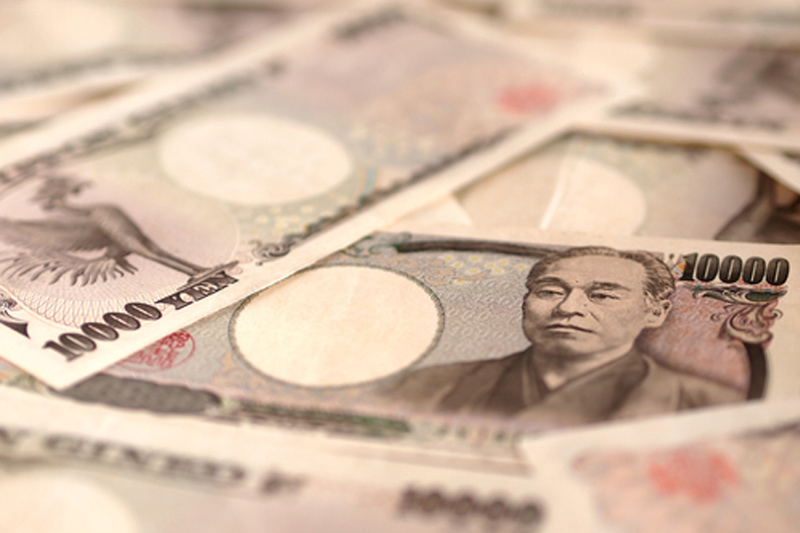Investing.com - The Japanese yen weakened slightly against the dollar in Asia on Friday after Bank of Japan board meeting minutes suggested broad agreement on current easy policy, and as price data sets in Japan and China were mostly along expected lines.
USD/JPY traded at 101.56, up 0.02%, after the minutes and after corporate goos prices, or CGPI, rose 1.7%, matching expectations on weaker commodity prices.
In China, consumer prices rose 2.4% year-on-year, a tad below the 2.5% gain expected, while producer prices fell 2.3%, in line with expectations and marking the 25th straight month of declines and underscore overcapacity problems in China.
Minutes from the March meeting of the Bank of Japan board showed members shared the view that the effects of the aggressive easy policy launched in April 2013 are steadily working, according to text released on Friday.
The nine board members "expressed the view that it was appropriate for the BOJ to continue to steadily pursue quantitative and qualitative monetary easing in accordance with the current guidelines, as Japan's economic and priced evelopments had been broadly in line with the forecasts presented in October 2013," the minutes showed.
The March meeting minutes indicated that the policymakers don't see an imminent need for additional easy policy, although market players are betting on additional monetary easing in the coming month.
There was agreement that that real interest rates are falling on the back of a rise in inflation expectations, the minutes also showed.
But one member questioned the expectations for the policy
"If a rise were to occur in markets' anticipation that quantitative and qualitative easing would continue for a protracted period or extreme additional measures would be implemented in a situation where it was unlikely that the price stability target would be achieved in about two years, this could lead to economic instability in the medium to long term, such as through a buildup of financial imbalances," they showed.
Overnight, the dollar weakened against most major currencies as investors continued to avoid the greenback after the minutes from the Federal Reserve's March policy meeting revealed monetary authorities are concerned with soft consumer prices.
The Federal Reserve Board of Governors unanimously voted to scrap a threshold that would hike interest rates once the unemployment rate hits 6.5%, according to the minutes of the Fed's March policy meeting released on Wednesday, a sign monetary authorities are growing concerned over low inflation rates.
In the past, the Fed had indicated rates were set to rise when the unemployment rate hits 6.5% provided that figure accompanied a 2.5% inflation rate.
Today, the headline unemployment rate stands at 6.7%, not far from the previous threshold, though labor markets remain slack and inflation remains well below 2.5%.
The Federal Reserve's decision to do away with its rate-hike threshold left markets convinced that interest rates will remain low for some time to come, even after the U.S. central bank winds down monetary stimulus programs.
Low borrowing costs weaken the dollar.
The minutes also indicated general concerns among monetary authorities over persistently low inflation rates.
Elsewhere on Thursday, the Labor Department reported that the number of individuals filing for initial jobless benefits in the week ending April 4 fell by 30,000 to 300,000, the lowest since May of 2007, from the previous week’s upwardly revised total of 332,000.
Analysts had expected jobless claims to decline to 320,000, though the numbers did little to boost the dollar.
Meanwhile in the euro zone, Greece made a successful return to the financial markets on Thursday, raising €3 billion in its first bond auction since 2010, when Athens sought its first bailout.
The Bank of England left the benchmark interest rate unchanged at 0.50% earlier Thursday, in a widely anticipated move.
The US Dollar Index, which tracks the performance of the greenback versus a basket of six other major currencies, was down 0.01% at 79.47.
On Friday, the U.S. is to round up the week with data on producer price inflation and the preliminary report on the University of Michigan’s consumer sentiment index.
